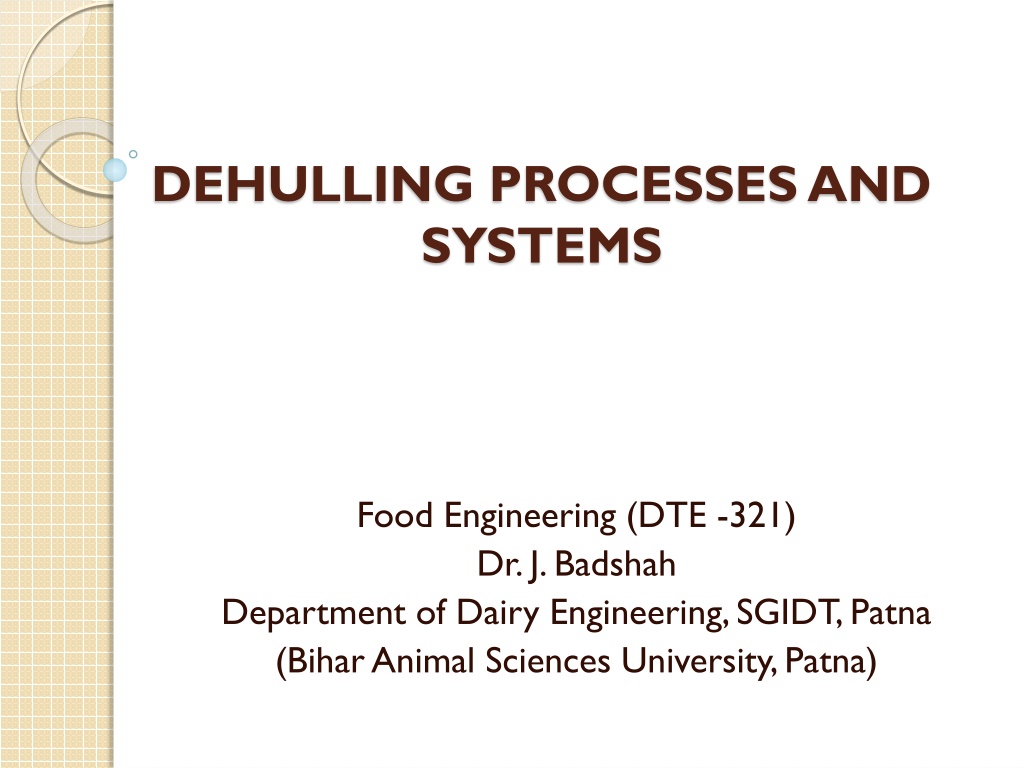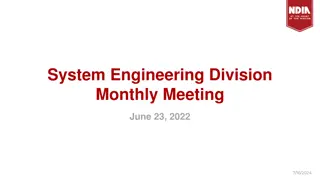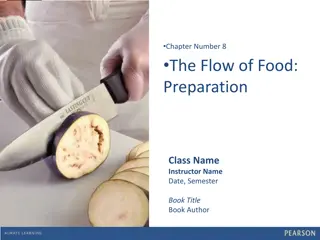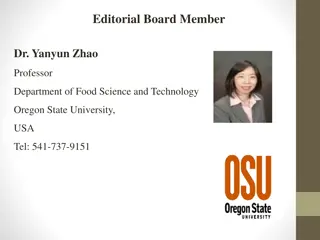Dehulling Processes and Systems in Food Engineering
Dehulling processes involve removing husks from grains and seeds with minimal damage, aiming to maintain the quality of the end product. Different systems such as Hot Dehulling, Warm Dehulling, and Cold Dehulling offer specialized approaches based on the type of beans being processed. The equipment used, like the Engleberg dehuller, plays a crucial role in achieving optimal dehulling efficiency and quality grain production.
Download Presentation

Please find below an Image/Link to download the presentation.
The content on the website is provided AS IS for your information and personal use only. It may not be sold, licensed, or shared on other websites without obtaining consent from the author. Download presentation by click this link. If you encounter any issues during the download, it is possible that the publisher has removed the file from their server.
E N D
Presentation Transcript
DEHULLING PROCESSES AND SYSTEMS Food Engineering (DTE -321) Dr. J. Badshah Department of Dairy Engineering, SGIDT, Patna (Bihar Animal Sciences University, Patna)
Purpose of Dehulling The purpose of hulling machine is to remove husk from any grain or seeds with minimum damage to the bran layer and as far as possible not to break the grains. Due to surface characteristics of different types of grains it is necessary to apply friction to the grain to remove the husk. Therefore, during hulling, certain percentage of broken cannot be avoided. In this respect the construction of machine, it s precision adjustment and the operation govern the optimum performance and the efficiency of the machine and best quality of grain production.
Dehulling System : Hot Dehulling The most popular dehulling system to meet today s high protein/low fiber meal market is Hot Dehulling System. This system will produce the meal quality for 12 months of the year, even with hard to dehull new crop beans while maintaining hull fats of less than 1 %. With the Hot Dehulling system there is no need to install expensive,high maintenance Grain Dryers,tempering Silo s,or Rotary Conditioners. In a standard conventional dehulling system the beans upto 13.5 % moisture are heated twice, but in the Hot Dehulling system the beans are heated only once. A Vertical Seed Conditioner - VSC is used to slowly heat the beans upto 140 F [60 C] approximately 2% moisture level. This heating and drying process results in very consistent conditioned beans in only 30 minutes. The patented Jet Dryer is then used for the final heating and drying. and dry the beans upto
Warm Dehulling The Warm Dehulling System is designed for areas of the world where imported beans are processed. With imported beans, the beans are harvested two to three months prior to processing and are naturally conditioned during the shipping process. There are only two changes from Hot Dehulling system to Crown s Warm Dehulling System. One is a slightly larger Crown VSC installed to heat the beans to proper flaking temperatures, 155 F [70 C] along with drying more than 2%. The other change is the Jet Dryer is no longer required, reducing installation costs. The remainder of the dehulling system is very similar to the Hot Dehulling system. The low fiber/high protein meal is still accomplished while maintaining hull fats close to 1%.
Cold Dehulling The conditioning equipment and also a very efficient and patented Aspirators to separate the free hulls and meats after the cracker and conditioner. cold dehulling system utilizes existing drying and Again, we design this system so it can easily be upgraded to a complete Hot Dehulling system in the future.
Equipment for Dehulling: Engle berg Huller The most common machine used for paddy hulling in India is Engle berg huller. The working element of this machine is ribbed cast iron roller. The roller rotates on axis inside a large concentric cylinder. On the inner cast iron roller,spiral ribbed strip are mounted to part of the length and on remaining part 4 to 6 straight ribbed strips are mounted. The roller is rotated at 600 to 900 rpm. Paddy is fed into the hopper and due to rotational direction of flutes, it is moved around the cylinder and finally towards the outlet. Friction between the grain and the steel parts of the huller causes the husk and bran to be scraped off. The huller does the job of husking and bran removal simultaneously.
Under Runner Disc Hullers The Under Runner disk hullers consist of two horizontal cast iron disks partly covered with an abrasive layer preferably of emery. The top disk is fixed with the body of machines,while the bottom disk rotates. The rotating disk is vertically adjustable by which clearance between the two disks is adjusted. As per the variety and the condition of grains, the clearance is decided. The condition of abrasive coating on the disks also affect the clearance. During hulling there is wear of abrasive coating and is not uniform over the entire surface of coating. Hulling is mainly concentrated at the center,therefore, after some time a ridge is formed at the outer ring of coating.
RubberRoller Shellers Rubber-roller shellers consist of two rubber rolls rotating in opposite direction at different speed. A feeder feeds uniformly to the machine. Feed is fed in thin layer between the rotating roll by the feeder. One of the roll is fixed while the other is adjustable to obtain desirable clearance between them. Speed of the rolls develop a shearing force on grain surface resulting in the opening and breaking of husk.
Husk Separator This machine is required to blow away husk from the mixture of shelled grains, husk and unshelled grain obtained from huller/sheller. It is a simple machine having a fan and an arrangement to distribute the product of sheller uniformly on an oscillating sieve with fine perforation. In the first stage the husk, brokens, germ and bran must be separated which is accomplished by the husk separator. This is done to ensure that air flows across uniformly and blow away the husk, the broken, germs and bran are separated through perforation while the immature grains are also blown away by fan.
Method of Milling/ Dehusking Wet milling method This method of processing is being adopted by comparatively smaller units. This method is practiced in southern India. The milling quality of this method was found to be good and on an average 72% recovery of grains. Dry milling method This method of milling of pulses is mostly adopted in the Northern and Central India. It varies widely from region to region. Dhal from dry milling method is said to have better cooking quality than that of wet milling.
Selection of a Huller Factors to be considered in the selection of a huller are a. Capacity b. Energy requirement c. Efficiency of husk removal d. Extent of physical damage to beans e. Separation of loose husk f. Durability g. Ease of maintenance
THANK YOU ejazbadshah@gmail.com























